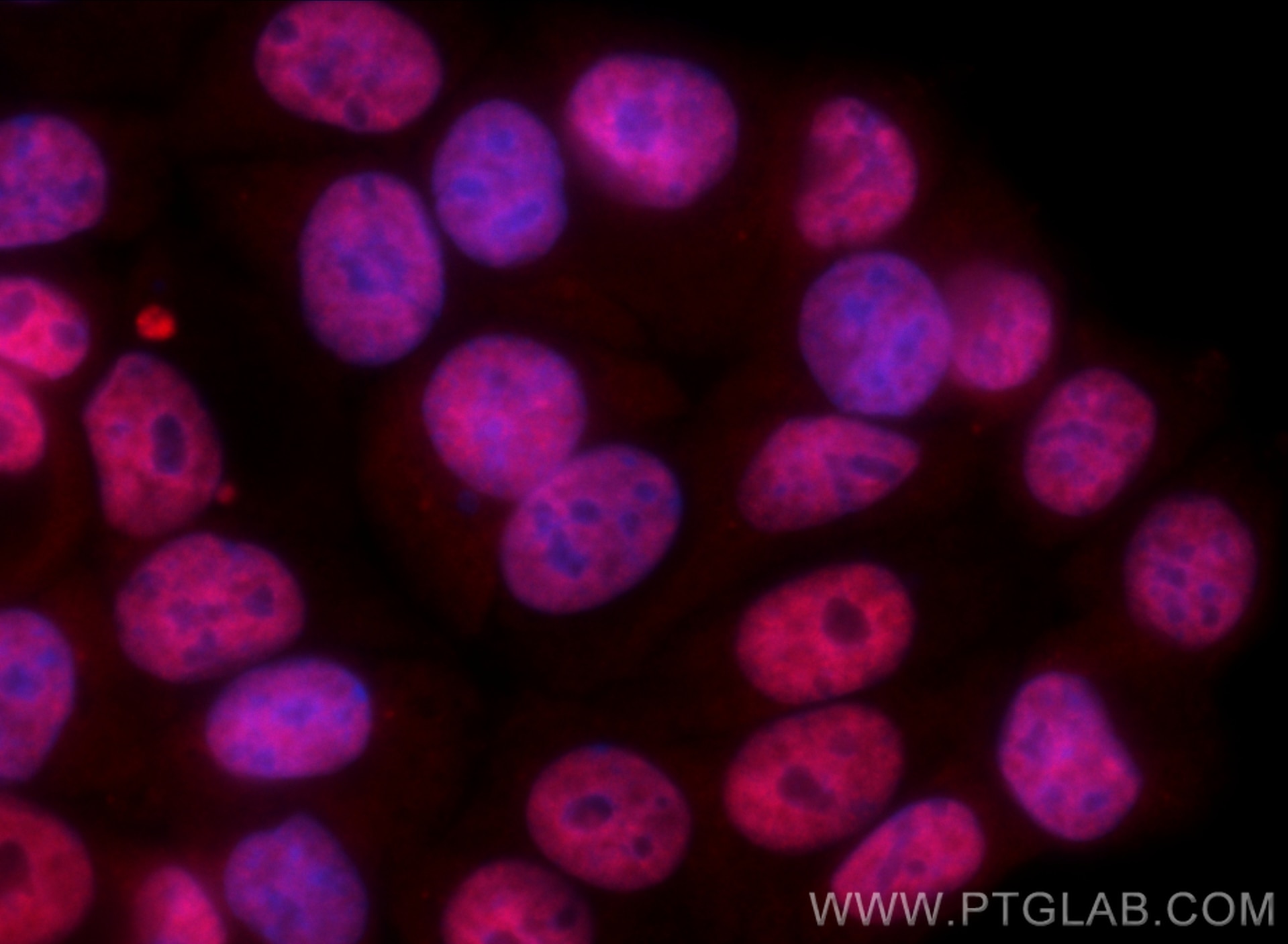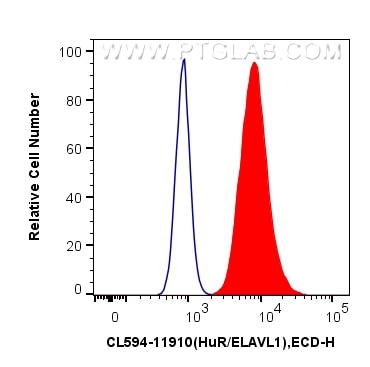Tested Applications
| Positive IF/ICC detected in | MCF-7 cells |
| Positive FC (Intra) detected in | MCF-7 cells |
Recommended dilution
| Application | Dilution |
|---|---|
| Immunofluorescence (IF)/ICC | IF/ICC : 1:50-1:500 |
| Flow Cytometry (FC) (INTRA) | FC (INTRA) : 0.40 ug per 10^6 cells in a 100 µl suspension |
| It is recommended that this reagent should be titrated in each testing system to obtain optimal results. | |
| Sample-dependent, Check data in validation data gallery. | |
Product Information
CL594-11910 targets HuR/ELAVL1 in IF/ICC, FC (Intra) applications and shows reactivity with human, mouse, rat samples.
| Tested Reactivity | human, mouse, rat |
| Host / Isotype | Rabbit / IgG |
| Class | Polyclonal |
| Type | Antibody |
| Immunogen |
CatNo: Ag2249 Product name: Recombinant human HuR protein Source: e coli.-derived, PGEX-4T Tag: GST Domain: 1-326 aa of BC003376 Sequence: MSNGYEDHMAEDCRGDIGRTNLIVNYLPQNMTQDELRSLFSSIGEVESAKLIRDKVAGHSLGYGFVNYVTAKDAERAINTLNGLRLQSKTIKVSYARPSSEVIKDANLYISGLPRTMTQKDVEDMFSRFGRIINSRVLVDQTTGLSRGVAFIRFDKRSEAEEAITSFNGHKPPGSSEPITVKFAANPNQNKNVALLSQLYHSPARRFGGPVHHQAQRFRFSPMGVDHMSGLSGVNVPGNASSGWCIFIYNLGQDADEGILWQMFGPFGAVTNVKVIRDFNTNKCKGFGFVTMTNYEEAAMAIASLNGYRLGDKILQVSFKTNKSHK Predict reactive species |
| Full Name | ELAV (embryonic lethal, abnormal vision, Drosophila)-like 1 (Hu antigen R) |
| Calculated Molecular Weight | 326 aa, 36 kDa |
| Observed Molecular Weight | 30-37 kDa |
| GenBank Accession Number | BC003376 |
| Gene Symbol | HuR/ELAVL1 |
| Gene ID (NCBI) | 1994 |
| RRID | AB_2923909 |
| Conjugate | CoraLite®594 Fluorescent Dye |
| Excitation/Emission Maxima Wavelengths | 588 nm / 604 nm |
| Form | Liquid |
| Purification Method | Antigen affinity purification |
| UNIPROT ID | Q15717 |
| Storage Buffer | PBS with 50% glycerol, 0.05% Proclin300, 0.5% BSA, pH 7.3. |
| Storage Conditions | Store at -20°C. Avoid exposure to light. Stable for one year after shipment. Aliquoting is unnecessary for -20oC storage. |
Background Information
ELAVL1, also named as HUR, belongs to the RRM elav family. It is involved in 3'-UTR ARE-mediated MYC stabilization. ELAVL1 binds avidly to the AU-rich element in FOS and IL3/interleukin-3 mRNAs. In the case of the FOS AU-rich element, ELAVL1 binds to a core element of 27 nucleotides that contain AUUUA, AUUUUA and AUUUUUA motifs.
Protocols
| Product Specific Protocols | |
|---|---|
| FC protocol for CL594 HuR/ELAVL1 antibody CL594-11910 | Download protocol |
| IF protocol for CL594 HuR/ELAVL1 antibody CL594-11910 | Download protocol |
| Standard Protocols | |
|---|---|
| Click here to view our Standard Protocols |






